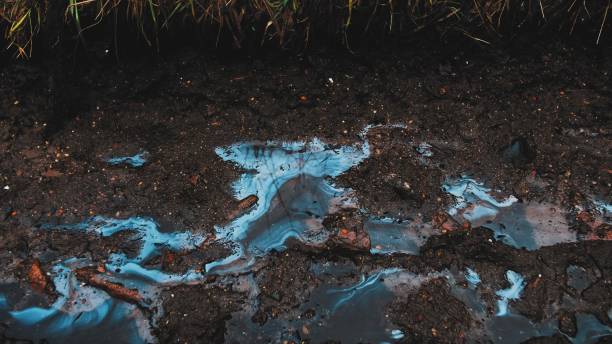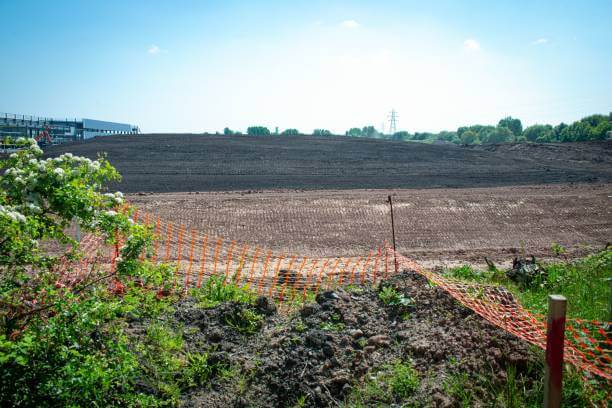Once toxic chemicals or contaminants reach high enough concentrations in the soil to risk human health or the environment, the soil is said to be polluted. Soil pollution, or soil contamination, regardless of the cause, can pose extreme risks for humans, animals, and plants, with the potential to destroy entire ecological communities.
Causes of Soil Contamination
The causes of soil pollution are broken down into two main categories -: natural and man-made. Natural contaminants include things like nitrates, sulfates, phosphates, metals, as well as organic compounds like fatty acids, lipids, and proteins. The latter compounds are made up primarily of decomposed microbes, plants and animals. While these things are naturally occurring, excessive levels are still said to be dangerous.

Man-made contaminants cause the majority of pollution in the soil, and are often due to improper disposal of toxic waste. Despite laws already in place, corporations and individuals still continue to illegally dump industrial chemicals, agricultural pesticides, radioactive waste, heavy metals, and other pollutants. Essentially, anything that does not occur naturally is a contaminate to soil and can cause problems in the environment.
Some of the most problematic soil contaminants, both natural and man-made, include:
- Arsenic
- Copper
- Herbicides
- Lead
- Mercury
- Nickel
- Pesticides
- Polyaromatic Hydrocarbons
- Zinc
The Effects of Soil Pollution
While the effects of soil pollution can be detrimental in various ways, health issues are often the most noticeable. Severity may vary in people based on different factors including age, general health, the type of contamination, and whether the contaminant was ingested, inhaled, or touched. Generally, children, seniors, and people with compromised health are more seriously affected than others.
Illnesses and conditions caused by exposure to contaminated soil may include the following:
- Cancer
- Chronic Fatigue
- Chronic Headaches
- Kidney Damage
- Liver Damage
- Lung Damage
- Neuromuscular Conditions
- Skin Conditions
- Digestive Issues
How Tilling Can Contribute to Soil Pollution
Tilling is considered to be a necessary step in preparing the ground for planting, but it can also do irreparable damage by destroying the soil structure. It can destroy the soil’s ecosystem, abbreviate the soil’s fertility period, and encourage both water and wind erosion. In the long run, all that remains is subsoil which is incapable of producing healthy crops. Additionally, tillage can release pollutants from the soil into the air, and at the same time, mix in any contaminants or crop residue that may be resting on the topsoil.
Soil Contaminant Testing
Soil contaminant testing involves screening the subsoil for indications of natural or man-made contaminants. Samples of soil, water, and gas may all be taken and tested for industrial compounds. Findings are compiled into a report, conclusions are stated, and recommendations are made when necessary.
These tests are often required for real estate transactions, as well as insurance and financial purposes. As mentioned before, certain contaminants are natural, but high levels can be dangerous, and are considered to be soil pollution.
Soil Contamination Remediation
Remediation can be expensive, but in many cases it may also be necessary, especially when it comes to residential properties. In some cases, financial assistance may be available – particularly if the area was known to have been exposed to contamination in the past.
There are an array of options available for soil contamination remediation, and certain methods may be recommended over others based on the situation.

Bioremediation
This process utilizes certain plants, fungi and microbes to naturally break down the contaminants. This is a lengthy process – but is a very environmentally friendly method of site remediation.
Capping
“Capping” is simply covering the contaminated site with at least 12” of new topsoil. New plant growth may or may not result, depending on whether or not roots are established. If not, this is a temporary solution at best.
Encapsulation
This procedure involves digging around the affected area and creating a barrier between the contaminated soil and healthy soil. It is then closed off and sealed, creating a pod-like structure that remains in place.
Excavation
This method is the most comprehensive method of remediation, but it is also expensive. Once the contaminated area is identified, it can be dug out and removed from the property, then transferred for safe disposal. New topsoil is then brought in to replace what was removed.
There may also be the option to remove and transfer the soil to a treatment facility for remediation, then returned.
Paving
Contaminated areas may be paved to help prevent the spread of pollution. This is a short-term solution, but in some cases may be the most practical option.
Soil Blending
Polluted soil is mixed with new topsoil to reduce the concentration of contamination. High levels of contamination will require more soil in order to achieve the desired ratio.
What To Do If You Have Soil Contamination
The first, and most important thing to do is to keep people and pets away from the area. Other steps that should be taken include:
- Mark the area with tape, flags, or fencing with warnings
- Children should be kept far away from the area and only allowed to play in designated safe areas. This should exclude any areas that may contain runoff
- Pets should be kept away from the area and only allowed to play and potty in safe areas
- Cover as much of the contaminated area as possible with fresh topsoil or mulch
- If you have to mow or do any work in or around the polluted area, wear gloves, protective clothing, and a mask or respirator if possible
Finally, if you are dealing with a soil pollution issue, contact Cabeno for professional, reliable, and thorough cleanup. We have the tools and experience to remediate the area in an environmentally friendly manner. We will meet with you to discuss the situation, evaluate your needs and future plans for the area, and make recommendations based on these factors.
Cabeno Environmental Field Services, LLC has earned the reputation of being a premier provider in environmental remediation services. We take pride in the customized services we provide, and we have a true passion for what we do.
We are committed to keeping humans, animals, and plants safe and healthy by eliminating or neutralizing harmful contaminants that have the potential to drastically devastate the environment. If you are dealing with any type of environmental contamination in the Chicago area or surrounding counties, we invite you to reach out to our team with any questions you may have.


